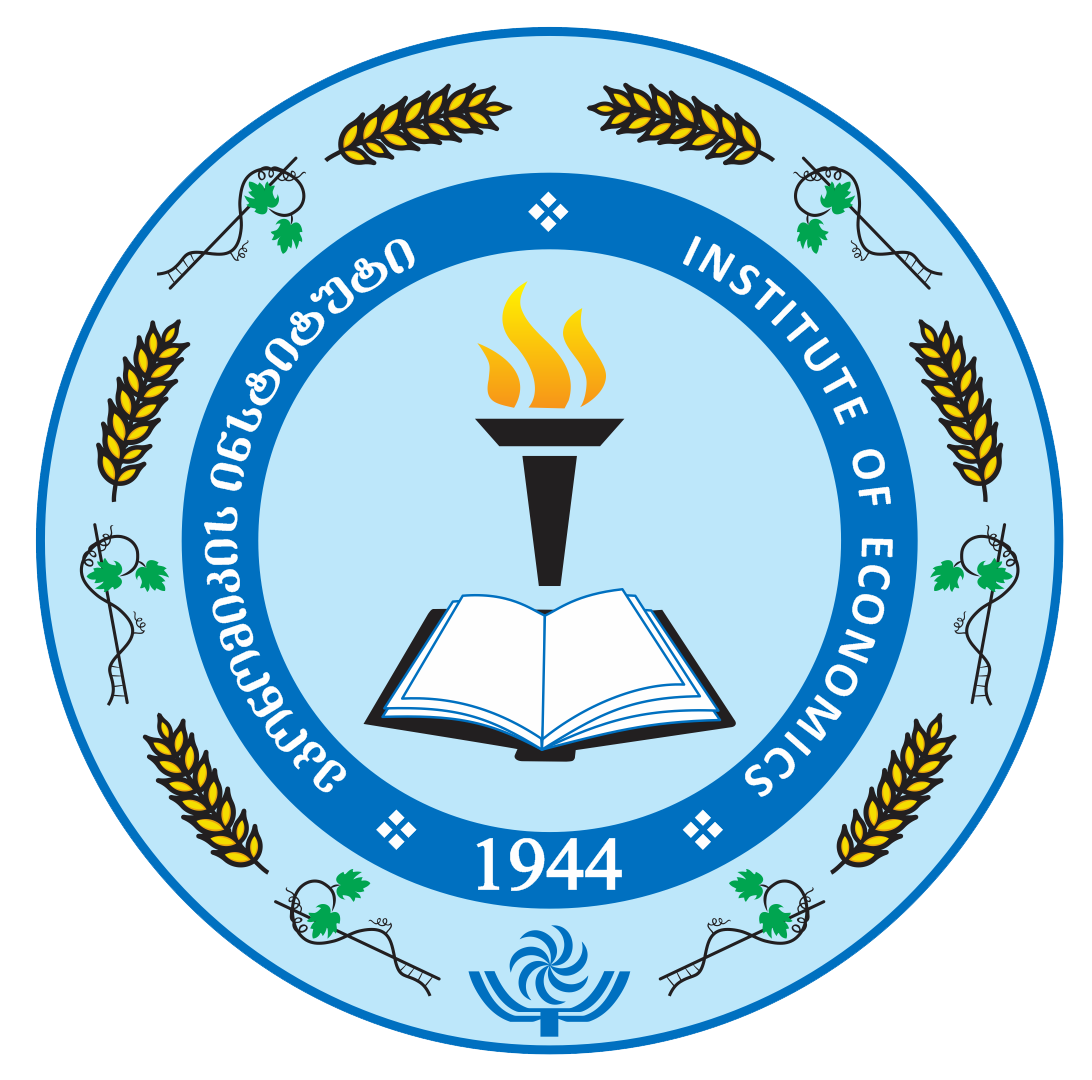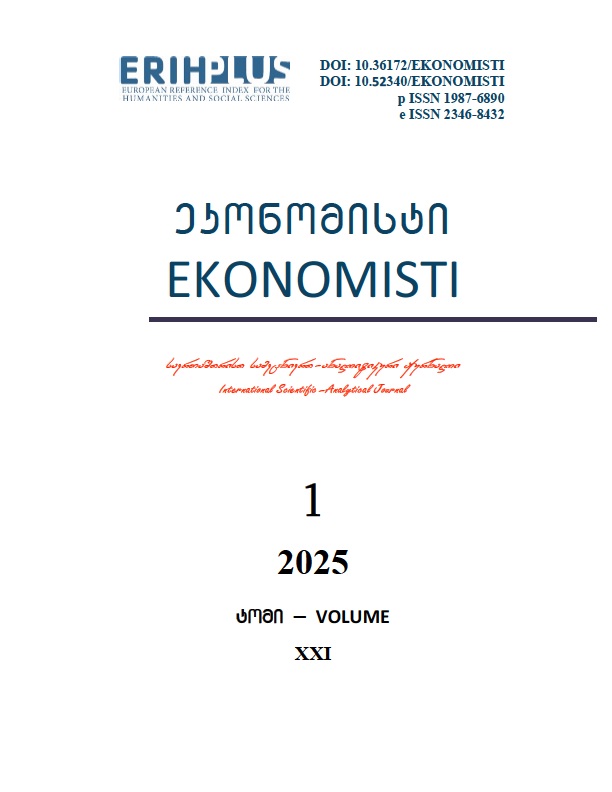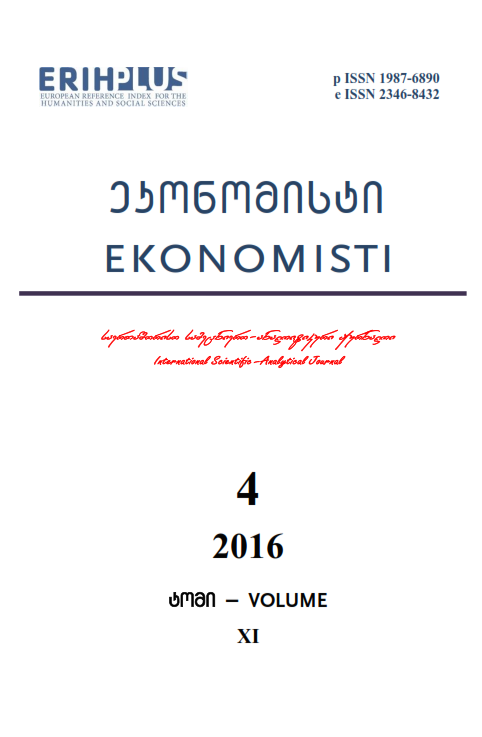
The international scientific and analytical, reviewed, printing and electronic journal of Paata Gugushvili Institute of Economics of Ivane Javakhishvili Tbilisi State University

Possibilities of econometric and statistical modeling of incomes and expenditures of Georgian households by small areas: Methodological analysis of selective and non-selective survey and identification of similar variables
Expanded Summary
Small area estimations (SAE) have been developed since 1970 and are considered to be the basis of FAY and Herriot. Statistical surveys of households are usually representative at a high level of aggregation. Through the mentioned method, small and large statistical datasets are used to obtain statistically significant estimates in small areas. Small area estimation models (SAE) are usually divided into two groups: 1) territorial unit models and 2) unit level models. These models mainly differ in the availability of statistical data.
The aim of the research is to obtain statistically significant estimates of household incomes and expenditures on the example of Georgia by the small territorial areas (municipalities/disrtict of Tbilisi) using the empirical models. The empirical realization of models should be based on similar variables. Based on detailed analysis of methodology, fieldwork instruments and metadata, similar variables should be identified from the selective (Households Incomes and Expenditures Survey) and non-selective (The General Population Census of Georgia) survey.
Households Incomes and Expenditures Survey: The main source of household income, expenditure and other statistical indicators of the living conditions in Georgia is the "Households Incomes and Expenditures Survey" ("Integrated Household Survey" before 2017). The mentioned survey is selective, data is collected monthly, aggregated data is disseminated annually, and the indicators are representative of private households in Georgia at the country and administrative region level. The survey is carried out using seven questionnaires:
v Shinda 01 - The first interview;
v Shinda 02 - Control card;
v Shinda 03 - Diary of expenses;
v Shinda 04 - Quarterly questionnare of expenses;
v Shinda 05 - Transfers and incomes from property, savings;
v Shinda 05-1 - Employment and income questionnare;
v Shinda 07 - Refusal sheet.
The General Population Census of Georgia: The General Population Census of Georgia has been conducted during November 5-19, 2014. The Census reference date (the moment of enumerating the individual) was defined as 12 a.m. on November 5, (thus, data on children born and persons deceased after the reference date was not collected). The Census covered 82% of the total area of the country (57 000 square kilometers). The Census could not be carried out in the occupied territories, particulaly in the Autonomous Republic of Abkhazia and South Ossetia (total area of 13000 square kilometers). The Census was conducted in 79% of the settlements (urban, community, and rural) of the country and covered 71 self-governed units and 3726 settlements. The Census could not be carried out in 1015 settlements of the occupied territories. The General Population Census of Georgia was carried out using four questionnaires:
v Form 1 – Questionnaire on Dwelling;
v Form 2 – Personal Questionnaire;
v Form 3 – Questionnaire on Migrant;
v Form 4 – Questionnaire on Agriculture.
Identical Variables: In order to realize the empirical models of small territorial areas, it is essential to identify similar variables from the selective "Household Income and Expenditure Survey" and non-selective " General Census of Georgia" surveys’ databases.
similar variables were identified, methodological similarities and differences were determined, and the need of modification variables (aggregation, disaggregation, re-codification, creation new variable, etc.) was assessed based on the analysis of statistical survey methodology, metadata, fieldwork instruments and databases.
Based on a detailed analysis of the methodology of statistical surveys, metadata, fieldwork instruments and databases, it is determined that the Survey of Households Incomes and Expenditures and the General Census of Georgia include up to 40 similar variables. After carrying out appropriate modifications of the mentioned variables (aggregation, disaggregation, re-codification, creation of new variables, etc.), it is possible to determine the identical variables of two statistical surveys and their further use: 1) in empirical analysis: in the analysis of time series and in the realization of empirical models of small area estimations, 2) for the possibility to link databases, and 3) for the use of other statistical methods (data correction, imputation, etc.).
Keywords: Household Income and Expenditure Survey of Georgia, Georgia Census, small area estimation methods, methodology, metadata and field work instruments of statistical survey.

